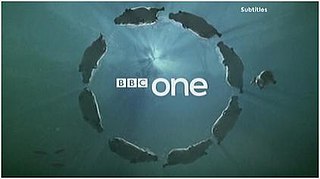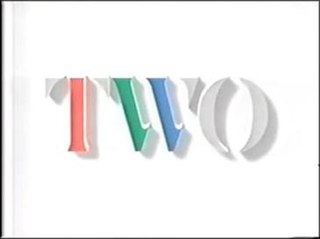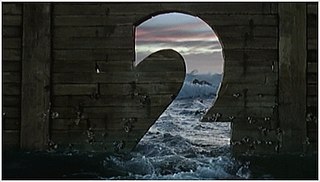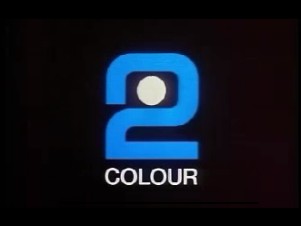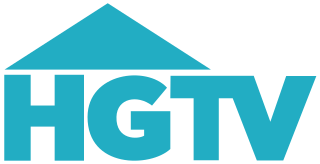BBC Knowledge
Ladders of Learning (1999–2000)

BBC Knowledge was launched on 1 June 1999 with the intent of creating a multimedia learning channel. [1] The idea was that computers, interactive TV via the Red Button and television could come together to make a new, factual, learning channel for children and adults alike. [1] The launch identity consisted of cartoon characters climbing 'ladders of learning' between clouds against an orange background. [1] [2] All the idents featured the station logo, which followed the BBC style design of the time by having the station name follow the BBC logo in upper case. This white logo would appear at the end of ident. [1] [2]
The idents all featured characters, drawn by Michael Sheehy, [1] shown with items such as a magnifying glass, telescope or rolls of paper. [1] Several variations of the ident were made featuring different characters prominent on the ladders of learning. [1] The ident was also used as the background to programme menus with characters seen climbing the ladders of learning in the background with programme information overlaid and centred to accommodate widescreen. [1] These characters could also be seen as stills on launch promotional material and on the BBC Knowledge website. [1] [2]
The channel launched with a Digital on-screen graphic (DOG), in line with the BBC practice at the time. However, different from the other channels which used the station logo, BBC Knowledge used the URL of their website 'www.bbc.co.uk/knowledge'. [1] [2] [3] The use of this promoted the website tie in with the channel. The channel also used credit promotions where additional content or information is promoted over a programmes end credits, by reducing the credits to a smaller size and filling the information in the remaining space. [1] [3] Another style of presentation utilised was that of viewer videos, shown either as part of the shrinking credits, or between programmes. [1] [3]
The presentation for the channel as a whole was in 16:9 widescreen from launch, however all information was kept in a 4:3 safe area, so no information was lost to viewers watching on a 'full screen' television. Information included the logo, promotions and the DOG. [1] [3]
Circles (2000–2002)
In January 2000, following the approval of the new BBC Four, BBC Knowledge's programming was realigned to better reflect the new channel. A single ident was utilised instead featuring a circle made out of different materials which would move forward and off the screen at the viewer. [4] These could be made with a variety of objects. [4] The musical accompaniment followed the choral and instrumental style. [4] This sequence lasted until the station went off air. Promotional style remained the same with the BBC Knowledge logo seen at the bottom. The DOG also changed to the BBC Knowledge logo.
Stranded idents
The channel had always utilised a stranded layout to make genres of programmes easy to find on the new channel. However, special idents began to appear for each strand from c.2000. [2] [3] These featured an object, before a fact about it related to the strand appears and ends on an image with the strand name shown clearly on screen, with a letter encircled at the centre of the screen. [2] It is unclear whether these idents were replacements of the normal idents, or complementary to them, however it appears they complemented them, with these idents being used in the stranded sections, with the animated idents used for general interest programming.
Following the relaunch in 2000 and 2001, all different idents were dropped in favour of a single ident, featuring numerous circles made out of different structures reflecting the new strands.






